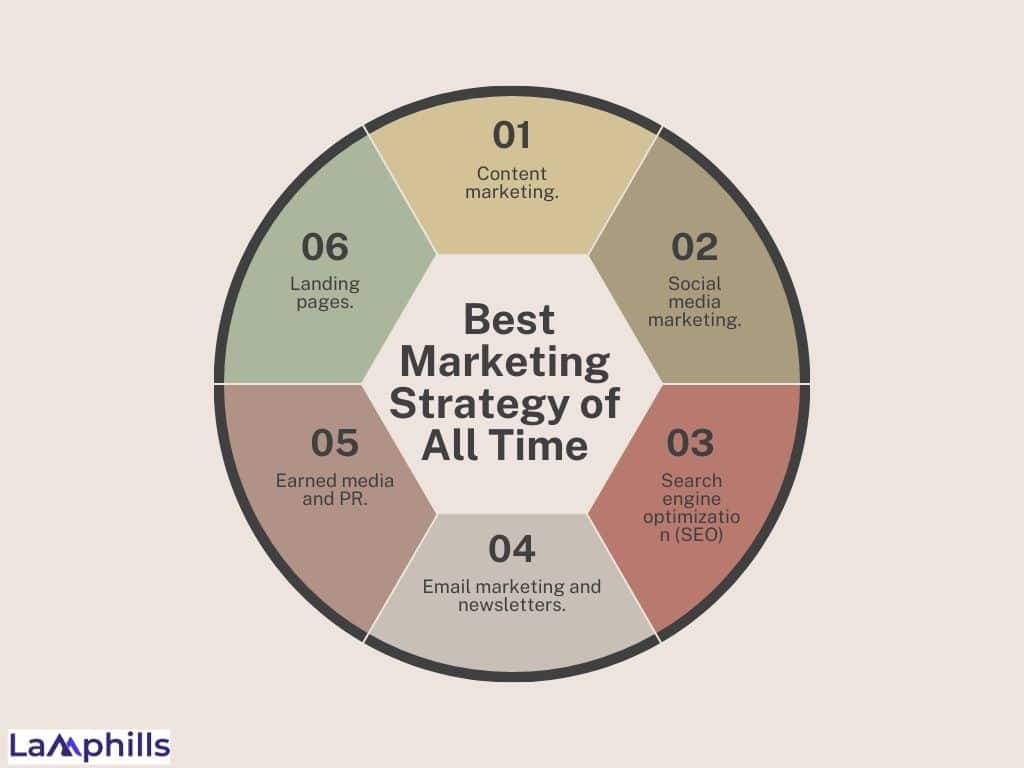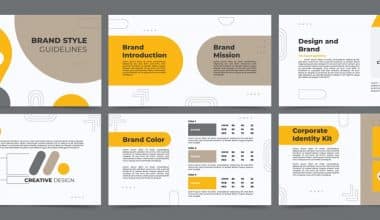The success of any company largely depends on its marketing campaigns. These are supposed to identify with the clientele by showing the purpose a particular product will serve, and create brand loyalty. What then makes a ‘good’ marketing campaign great? The best ones don’t just capture attention; they leave a long-lasting mark, shape customer behavior, and more often become part of cultural conversations. Even worse, some campaigns outgrew the exact purpose for which they were created—to create unforgettable experiences that people would talk about for decades. Which are the top 15 campaigns of all time and what can brands like you learn from them?
The following are the 15 best marketing campaigns of all time, and what one can learn from them. Whether you’re a small business owner, a marketer, or anyone who realizes the power of a job well done in creating an ad, it is amazing how much these examples have in common.
Key Points
- Successful marketing campaigns are crucial for a company’s growth, as they establish brand loyalty and resonate with customers by highlighting the product’s purpose.
- The most effective marketing campaigns capture attention, leave lasting impressions, shape customer behavior, and often become part of cultural discussions.
- Notable campaigns include Apple’s “Think Different,” Nike’s “Just Do It,” Coca-Cola’s “Share a Coke,” Old Spice’s humorous ads, and Always’ “#LikeAGirl,” each demonstrating unique strategies to engage audiences.
- Successful campaigns emphasize branding with relatable ideas, harnessing emotional connections, personalizing experiences, using humor for memorability, and addressing social issues to resonate with consumers.
Best Marketing Campaigns of All Time
Every advertising campaign has an impact on the brand. It is not a compulsion to get positive results all the time. However, advertising is necessary to take your brand to another level in the corporate sector.
The two greatest risks in advertising are evaluating the worth of the Ad and making sure it specifically targets a suitable group of consumers. I think brands use a couple of marketing campaigns in their businesses. It differs in the media being used, its purpose, and how the adverts get aired to the public. A few examples of the best marketing campaigns are discussed below.
#1. Apple’s “Think Different” Campaign
In 1997, Apple launched the “Think Different” skyrocketing the company. This campaign renamed the image of Apple into one of strictly innovation and creativity. The ads reflected this message through iconic personalities, such as Albert Einstein, Martin Luther King Jr., and Pablo Picasso.
- Lesson: Brand yourself along with ideas and people that the audience resonates with, it’s not about the product sometimes, but really about what the philosophy or insight is.
#2. Nike’s “Just Do It” Campaign
Nike’s “Just Do It” campaign, launched in 1988, was among the most recognizable ad campaigns ever created. The catchphrase became synonymous with the company, symbolizing personal power, motivation, and the urge to be more. It called upon people to go to the limit of human endurance and practice healthy lifestyles. The ad continued right into the present with new athletes participating, but the core message remained identical.
Just do it!
One phrase, endless possibilities— ignited a global movement.
‘Just Do It’ turned Nike into more than just a brand—it became a symbol of motivation.
Nike’s sales skyrocketed by 1,000%—all thanks to three simple words.
How did ‘Just Do It’ reshape sportswear? It gave every athlete the confidence to succeed.
Nike’s ‘Just Do It’ campaign: proof that a powerful slogan can turn a brand into a cultural icon.
This shows how Nike’s “Just Do It” became one of the most successful marketing slogans ever, significantly boosting its sales and brand image.
Takeaway: Nike's "Just Do It" campaign transcends a simple tagline—it's a powerful movement that resonates deeply with people worldwide. By authentically tapping into emotions and aligning with meaningful social causes, Nike has cultivated a brand that not only sells products but also inspires action and fuels motivation. It’s more than just sportswear; it’s about embracing the relentless pursuit of greatness, on and off the field. Nike is a brand that gets it right! #3. Coca-Cola’s “Share a Coke” Campaign
Remember the “Share a Coke” campaign?
It was iconic, yet so simple!
They put names on a can and boosted sales by $2 Billion in just one summer.
The takeaway?
Personalization works. Creativity works. Simple works.
It gets personal with the “Share a Coke” campaign in which Coca-Cola replaces its iconic logo on bottles with people’s names. Following the launch in Australia in 2011, then worldwide, the ad encourages customers to share a Coke with someone bearing the name on the bottle. Clever, personal touches like that will drive brand engagement and sales.
- Lesson: One of the most important approaches in marketing is personalization. Customers are made to feel unique and valued, which encourages more engagement and loyalty.
#4. Old Spice’s “The Man Your Man Could Smell Like” Campaign
Old Spice is a brand that reinvented itself through the “The Man Your Man Could Smell Like” campaign in 2010. Amusingly quirky in tone, it helped change the brand’s image from old-fashioned to fresh and edgy. Such ads went viral on the social media platforms of this brand, creating huge awareness.
- Lesson: Make advertising humorous and entertaining, and thus memorable and viral.
PRO -TIP: Humor is a powerful tool in advertising because it grabs attention and makes the brand more relatable. People remember funny ads more easily, and humor helps create a positive emotional connection. It can also increase sharing, as viewers often want to share entertaining content with others. Brands like Old Spice and Dollar Shave Club have successfully used humor to build memorable and viral campaigns, proving how humor can boost engagement and brand loyalty.
#5. Always’ Campaign of “#LikeAGirl
The “#LikeAGirl” campaign initiated by Always in 2014 challenged stereotypes and set women free by asking what it means to do something “like a girl.” It all started with a simple viral video that spread across social media instantly, catalyzing conversations on gender stereotypes. Always needed a way to appeal to the next generation of consumers in the face of growing competition from rivals gaining traction with Millennial girls via social media. The award-winning response was the Always #LikeAGirl campaign, which turned a phrase that had become an insult into an empowering message.
- Lesson: Socially-conscious marketing can use deep emotional connections to connect with customers, especially on issues about which people care in the context of the culture.
#6. McDonald’s “I’m Lovin’ It” Campaign
ONE OF THE BEST MARKETING CAMPAIGNS!
I loved it when McDonald’s took a lengthy slogan and smartly shortened it to “I’M LOVIN’ IT!”.
Pairing those three words with a catchy tune was pure marketing genius. It made their brand message so memorable and instantly recognizable.
This campaign showed that sometimes, less really is more!
The “I’m Lovin’ It” campaign by McDonald’s, launched in 2003, was an instant hit worldwide. Many would argue this is due to its stick-in-your-head song and its universal message. This helped position McDonald’s as a fun, family-friendly company that makes its customers happy. The 2003 McDonald’s ‘I’m Lovin’ It’ ad skillfully used global brand recognition and cultural variety to highlight the company’s universal appeal.
By showcasing a simple yet relatable scenario of a tourist seeking a familiar haven in unfamiliar territories, the campaign not only highlighted McDonald’s expansive global footprint but also reinforced its position as a comforting and accessible choice worldwide.
This calculated move heightened consumer brand loyalty while appealing to their emotional bond with McDonald’s.
- Lesson: Consistency in the message across channels or regions helps to build top-of-mind and global brand appeal.
#7. Volkswagen “Think Small” Campaign
Throwback to one of the most iconic ad campaigns in history created by the advertising agency Doyle Dane Bernbach (DDB)!
The 1960s ‘Think Small’ by Volkswagen wasn’t just an ad—it was a revolution in Marketing. At a time when bigger was better, Volkswagen challenged the norm by celebrating simplicity and practicality.
It proved that challenging the norm and embracing simplicity can lead to massive success. Even decades later, brands are inspired by this approach, focusing on authenticity and standing out by being different.
The ‘Think Small’ mindset is a timeless reminder that bigger isn’t always better.
For an imported car to make it in the U.S. market, it has to have unique appeal and be adaptable. By the end of its first decade in the United States in the 1950s, it was selling 100,000 units a year and kept adding features such as more powerful engines, larger lights, chrome bumpers, and more. DDB Advertising’s “Think Small” ad campaign helped, but genuine love of the car helped Volkswagen sell more than 21 million through 1980. Even then, the Beetle still sold in Mexico until 2003.
Many would consider Volkswagen’s “Think Small” campaign from the 1960s one of the most brilliant advertising campaigns. Embracing the Beetle’s small dimensions as a unique selling point, VW ran ads without major touting the size and power VWs had for their cars. The minimalist control of the ads and great copywriting combined to change American appreciation of compact cars.
- Lesson: Embrace your product’s unique qualities, even if they seem like weaknesses. Turning potential downsides into strengths can make your brand stand out.
#8. Red Bull’s “Stratos” Campaign
Red Bull did take the cake when marketing took a literal high—speaking—with the “Stratos” campaign in 2012. Here, skydiver Felix Baumgartner quite literally jumped from the stratosphere. It was happening way back in time, capturing people’s full attention globally, and giving rumors on live streams across all platforms. The reinforced-on-branding was Red Bull as a company that ‘gives you wings’.
Content is King!
What story are you telling?
Read also: Social Media And Content Marketing: Building a Winning Strategy
Red Bull’s Stratos campaign, centered around a space jump, captivated a global audience and reinforced their brand identity. Quality, relevance, and consistency are key. Make sure your content speaks directly to your audience’s interests.
#9. Procter & Gamble’s “Thank You, Mom” Campaign
When Procter & Gamble launched their “Thank You, Mom” campaign for the 2012 Olympics, moms who resembled those who had supported the Olympic athletes themselves were applauded by others. In fact, this campaign was quite effective, tugging at viewers’ heartstrings to illustrate how much moms sacrifice to provide opportunities for their children.
- Lesson: Emotionally-driven campaigns have the potential to strike a real chord with audiences when they mine a universal theme, such as family and perseverance.
#10. Dove’s “Real Beauty” Ad Campaign
Dove’s “Real Beauty” campaign, begun in 2004, combatted traditional beauties by showcasing real women of all shapes, sizes, and ages in its advertisements. Further, the women came into their own through this campaign and started a bigger conversation about body image in media.
What happens when your message doesn’t match your brand? For instance, Dove’s consistent message of real beauty has resonated deeply with their audience. Their campaigns focus on natural beauty and self-confidence, creating a strong emotional connection with their customers. Similarly, Airbnb’s “Belong Anywhere” campaign has successfully communicated its brand values of community and belonging across the globe.
In contrast, inconsistent messaging can dilute your brand’s impact. Pepsi’s controversial 2017 ad featuring Kendall Jenner was seen as tone-deaf and inconsistent with their previous messaging, leading to public backlash. Are you ready to align your messaging?
Crafting a consistent message is crucial for brand continuity.
- Lesson: Authenticity resonates with consumers. Building a campaign around real, relatable people does have the power to help them develop trust and rapport with the audience.
#11. The “Year in Search” campaign by Google
Every year, Google publishes its “Year in Search” video minute-long summary of the hot search topics of the given year. The campaign pulls on the heartstrings, leading people down memory lane on impactful events that shape the year. Such is the power of telling a story with data.
- Lesson: Data-driven marketing can be very effective when it taps into an emotional or cultural moment. Use relevant data to tell a compelling story.
#12. ALS Association’s “Ice Bucket Challenge”
In 2014, the “Ice Bucket Challenge” surpassed social media’s ability to raise money and awareness for ALS research. The viral dare involved pouring ice water on one’s head, posting the video to social media, and then nominating others to do the same, who had to contribute some cash as a fine to the ALS Association. Money flowed in by millions, with the campaign acquiring a life of its own.
- Lesson: When the stars align, user-generated campaigns and viral challenges can be some of the most powerful awareness vehicles. Use social media to create a call to action that people want to join.
#13. Nike’s “Colin Kaepernick” Campaign
Nike made a strong statement by partnering with social justice movements in their 2018 campaign, which starred Colin Kaepernick. The tagline for the campaign is “Believe in something.” Nike’s endorsement of Kaepernick’s protests against racial injustice, “Even if it means sacrificing everything,” sparked a national conversation.
- Lesson: Companies can develop a strong sense of audience loyalty by taking a stance on social or political concerns. Take calculated chances to stay true to the principles of your brand with social justice movements.
#14. Budweiser “Whassup” Campaign
Budweiser, in 1999, launched one of the greatest ad campaigns in history: “Whassup.” The calling phrase “What’s up!” quickly became a general reference in pop culture, and the campaign progressed from TV to radio to the internet afterward. The ad was pretty straightforward, plus humorous, and thus became very memorable and shareable.
- Lesson: Catchy, simple phrasing paired with a pinch of humor affords a campaign that is truly a full-fledged cultural phenomenon. Be shareable by crafting playful and delightful content.
#15. Airbnb’s “We Accept” Campaign
In response to the growing worldwide dialogue on inclusivity, Airbnb debuted the “We Accept” commercial campaign during the 2017 Super Bowl. The campaign positioned the brand as a place where all races, genders, and backgrounds are welcome. The message was very close to the core values of Airbnb and reached the hearts of consumers worldwide.
- Lesson: Brand endorsement for a correct cause of inclusiveness and acceptance can help build connection and loyalty.
Marketing Campaigns Template
It is necessary to have a certain structured plan through which you will develop a full-fledged marketing campaign of your own. Here are two basic templates through which you could outline a campaign strategy.
| Section | Description |
| Campaign Goal | Define what you want to achieve (e.g., brand awareness, sales). |
| Target Audience | Identify your audience segments based on demographics and behavior. |
| Marketing Channels | List the platforms you’ll use (e.g., social media, email, print). |
| Content Plan | Specify the types of content (e.g., videos, blogs, social posts). |
| Timeline | Map out the launch date and key milestones of your campaign |
| KPIs (Key Performance Indicators) | Measure success through metrics like engagement, conversions, and sales. |
| Key Message | Craft a core message that will resonate with your target audience. |
Social Media Campaign Template
| Platform | Content-Type | Posting Frequency | Key Message |
| Video, image, blog post | 3 times per week | Highlight customer stories and testimonials. | |
| Tweet, thread | 5 times per week | Share updates, and news, and respond to followers. | |
| Article, infographic | 2 times per week | Post thought leadership content. | |
| Photo, story, reel | Daily | Showcase product benefits with visuals. |
What Is the Best Marketing Strategy of All Time?

8 best marketing strategies
- Content marketing.
- Social media marketing.
- Search engine optimization (SEO)
- Email marketing and newsletters.
- Influencer marketing.
- Earned media and PR.
- Landing pages.
- Advertising.
What Is the #1 Rule in Marketing?
Understanding your audience is the first marketing rule. Developing persuasive marketing tactics that connect and produce results requires a thorough understanding of the needs, tastes, and habits of your target market.
What Is the 3-3-3 Rule in Marketing?
According to the 3-3-3 rule, your marketing message should be divided into three sections, each lasting three minutes, thirty minutes, and three seconds, accordingly. This guideline attempts to provide clear, meaningful material over a range of periods while acknowledging the short attention spans of today’s customers.
What Is the 1% Rule in Marketing?
This small-margin gain method is commonly known as the 1% rule. According to the theory, even a small daily improvement of 1% might have a big effect over time. Even though one percent might not seem like much, it adds up—especially in a business setting.
What Is the Golden Triangle Rule Marketing?
The “Golden Triangle” of marketing comprises three crucial components for success: the media, the message, and the market.
Final Word
The 15 marketing campaigns discussed here all share a common trait. Translating, they were able to penetrate the market and customer base to thus foster long-term relations. From the ‘Think Different’ introduced by Apple to the ‘Real Beauty’ commercials by Dove, each campaign merged with the company’s brand to the ad that shaped the culture. This will increase your chances of creating a campaign that will stick in the audience’s memory and provide the appropriate campaign templates based on these samples.
Related Articles
- How I Do Digital Marketing for Small Businesses in 2024
- 15 Marketing Video Examples to Inspire Your Next Campaign
- A Complete Guide to Hashtag Marketing Strategies, Examples for Effective Campaigns






